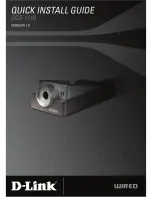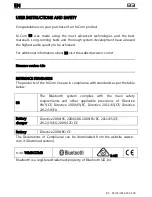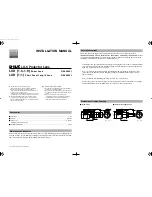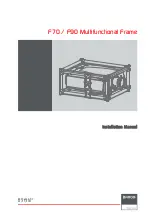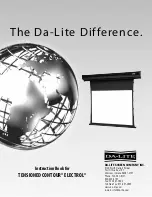
ABSTRACT
This white paper has been written to address common questions that result from use of the Larson Electronics SMBUS family of
battery products—the most common questions being those that regard implementation of the communication protocol, SMBus.
OVERVIEW
SMBus V1.1 is a derivative of the popular I2C® bus developed by Phillips, which is a simple-to-use, three-wire (ground, clock, and
data) serial-bus architecture. Though the I2C bus has many popular uses, it is primarily used for low-to-moderate serial speed
communication on board-level designs that require a peripheral-to-processor communication link such as remote-temperature sensors.
I2C VERSUS SMBus
Several differences exist between the standard I2C bus and SMBus, the largest being the maximum speed. While SMBus maximum
speed is 100 kHz, I2C can be as fast as 400 kHz or higher. As with most network architectures, I2C will negotiate down to slower clock
speeds to communicate with lower-speed devices such as SMBus.
Another key difference between the two busses is addressing scheme. That is, SMBus does not truly allow addressable items as with
most I2C devices. Instead, SMBus assigns id 11 (0x0B) to batteries on the bus, and other devices get the next-available ID on the bus
as communication is established. This being the case, addresses for battery IDs can occur at random when multiple batteries are on
the same bus. This leads to difficulty in physically identifying which battery is communicating from which address.
Making addressing difficulties worse, the addresses will change dynamically every time batteries are removed from the device or the
device is fully discharged and powered
down. This is not an entirely bad situation, as there are several multiplexer (MUX) devices
available from various vendors which can help identify each data and clock line. Using a MUX will enable the designer to identify
specific batteries repeatably and reliably without worry of battery addressing changes.
BTT-LON-207WH-SMBUS
Larson Electronics, LLC
Phone: (800) 369-6671
Fax: (903) 498-3364
www.larsonelectronics.com
2
of
4
OPERATION
Once the SMBus communication protocol is established, information between the host device and the battery can be exchanged.
“Smart” batteries have several broadcast modes, such as charge/current request and error/alert notifications. The fields typically
available to a host device are defined in the Smart Battery Data (SBData) Specification, V1.0. This specification lists the parameters
required by smart batteries to be compliant.
Several important parameters used by the host device to monitor battery condition and status are voltage, current, remaining capacity,
and absolute state-of-charge. Further, the battery can communicate remaining run time to the host to warn of impending power loss
due to battery discharge through low-battery condition alarms. Typically, the reported remaining capacity and run-time information has
temperature and discharge rate compensation to account for battery performance and internal impedance.
DESIGN CONSIDERATIONS
A noteworthy design consideration is that the use of SMBus and I2C buses requires a low-capacitance path. If these communication
protocols are utilized across a cable, distance must be kept to a minimum, which typically less than six feet. Using shielded cable or
twisted-pair cable may assist in providing more reliable communication. Several devices are available that can extend and “square” off
the communication waveforms to fight high capacitance or longer cable runs and thus create reliable communication links.





